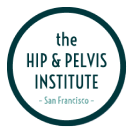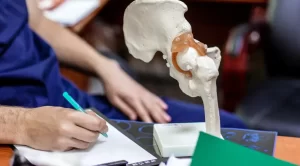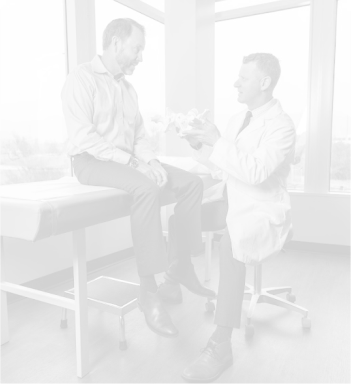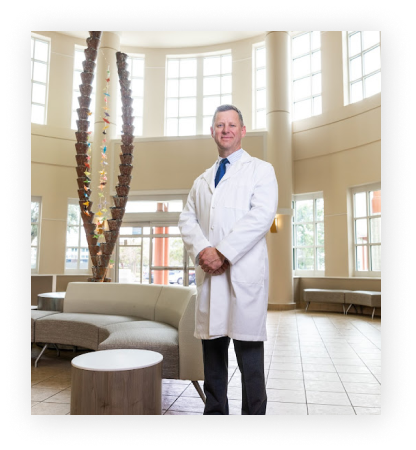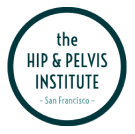A total hip replacement is a transformative procedure that restores mobility and alleviates chronic pain for countless patients. However, one of the potential risks following surgery is hip dislocation, where the artificial joint becomes misaligned. While advancements in surgical techniques and implant designs have reduced this risk, patient actions during recovery play a crucial role in ensuring long-term success.
Understanding how to protect the joint post-surgery not only minimizes the risk of complications but also accelerates recovery and enhances overall outcomes. This article provides a comprehensive guide on preventing dislocation after total hip replacement, offering actionable tips and strategies to help patients maintain stability and confidence during their healing journey.
Understanding Hip Dislocation After Total Hip Replacement
Hip dislocation after a total hip replacement occurs when the ball of the artificial joint slips out of its socket. This complication is uncommon but can happen during the initial weeks of recovery when the soft tissues around the joint are still healing. Dislocation is not only painful but can also disrupt the healing process and require additional medical intervention. Understanding the factors that contribute to dislocation is essential for reducing its likelihood and ensuring a smooth recovery.
Risk Factors for Hip Dislocation:
- Surgical approach: Certain techniques, such as the posterior approach, may carry a slightly higher risk due to muscle and soft tissue disruption.
- Implant design and positioning: Misalignment or improper placement of the implant can lead to instability.
- Patient activity levels: Sudden or extreme movements, such as bending or twisting, can strain the joint.
- Muscle weakness: Reduced strength in the muscles surrounding the hip may lead to less stability in the joint.
- Health conditions: Pre-existing conditions such as obesity, neuromuscular disorders, or arthritis can impact joint stability.
- Age and bone quality: Older patients with weaker bones may face a higher risk of complications, including dislocation.
By recognizing these risk factors, patients and healthcare providers can work together to create a recovery plan that minimizes dislocation risks and promotes long-term joint stability.
Post-Surgery Movement Precautions
Following total hip replacement surgery, adhering to movement precautions is crucial to prevent dislocation during the healing phase. The first few weeks post-surgery are particularly critical, as the soft tissues and muscles supporting the new joint are still recovering. Proper movement techniques and avoiding certain positions can significantly reduce the risk of dislocation and promote a smooth recovery process.
Safe Positions After Hip Replacement Surgery:
- Avoid bending at the hip past 90 degrees: Activities such as sitting in low chairs, tying shoes, or leaning forward should be modified to maintain a safe angle.
- Do not cross your legs: Crossing the legs puts undue strain on the hip joint, increasing the risk of the ball slipping out of the socket.
- Be mindful of twisting movements: Avoid sharp or sudden twisting of the torso, especially while the feet remain stationary.
- Use supportive tools for mobility: Devices like walkers or crutches can help maintain balance and reduce pressure on the joint during early recovery.
- Sleep in the correct position: Patients are often advised to sleep on their back with a pillow between their legs to maintain alignment and stability.
These precautions may vary based on the surgical approach and individual recovery needs, so it is essential to follow specific instructions provided by the surgeon or physical therapist. Proper education and mindfulness about movement can make a significant difference in preventing dislocation and ensuring a successful outcome.
Physical Therapy and Strengthening Exercises
Physical therapy plays a pivotal role in preventing dislocation after total hip replacement by improving muscle strength, joint stability, and overall mobility. A well-structured rehabilitation program not only aids in recovery but also reduces the risk of complications such as stiffness, weakness, or improper joint alignment. Strengthening the muscles surrounding the hip, particularly the gluteal, quadriceps, and core muscles, is essential for maintaining joint stability during daily movements.
Therapy typically begins shortly after surgery, with light exercises focused on restoring range of motion and encouraging blood flow to the area. Simple activities such as ankle pumps, gentle leg lifts, and seated knee bends are often introduced to build a foundation for recovery. As healing progresses, the physical therapist incorporates more challenging exercises like standing leg raises, side steps, and resistance band movements to further enhance strength and flexibility.
What’s often underemphasized is the importance of balance and proprioception training. These exercises, which might include standing on one leg or using a balance board, help patients regain confidence in their movements and reduce the likelihood of falls that could compromise the new joint. Patients are also taught proper body mechanics for common activities like bending, sitting, and standing to ensure safe movement patterns. Tailored physical therapy programs not only promote faster recovery but also empower patients to resume their daily activities with confidence and stability.
Lifestyle Adjustments to Prevent Dislocation
Making thoughtful lifestyle adjustments is essential for preventing hip dislocation after total hip replacement, especially as patients transition back to their daily routines. These adjustments help protect the new joint, promote long-term stability, and ensure a successful recovery. One of the most impactful changes involves avoiding high-risk activities that place unnecessary stress on the hip. Patients should refrain from heavy lifting, sudden twisting motions, or engaging in high-impact sports until cleared by their healthcare provider.
Creating a hip-safe home environment is another critical step. Simple modifications, such as using chairs with armrests and elevated seats, can prevent bending the hip past 90 degrees, which is a common cause of dislocation. Installing grab bars in bathrooms, using a long-handled shoehorn, and securing loose rugs to avoid tripping are additional measures that can reduce risks.
Weight management also plays a vital role in maintaining joint health. Excess body weight can place undue strain on the hip joint, increasing the likelihood of complications. Engaging in low-impact activities such as swimming, cycling, or walking can help patients maintain an active lifestyle without jeopardizing the new joint.
Additionally, being mindful of posture and alignment during activities like standing, sitting, and sleeping can make a significant difference. Patients who adopt these proactive lifestyle changes often experience better outcomes, reduced risk of dislocation, and improved confidence in their mobility as they move forward in their recovery journey.
Conclusion
Preventing hip dislocation after total hip replacement is a combination of understanding proper movement, building strength through physical therapy, and making essential lifestyle adjustments. By taking proactive steps and following personalized care plans, patients can significantly reduce their risk of complications and enjoy a smooth recovery.
At The Hip and Pelvis Institute, we are committed to providing comprehensive post-operative guidance and expert care to ensure the best outcomes for our patients. If you have questions about hip replacement recovery or need personalized advice, visit us or call (415) 530-5330 to schedule an appointment today.
